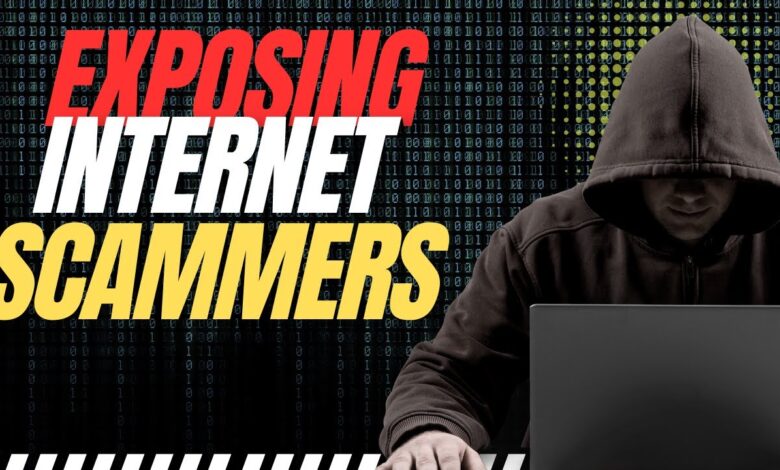Exposing the Massive Tech Review Scam Network

The digital landscape is built on trust. We watch product reviews to make informed decisions, trusting that the creator on the other side of the screen is giving us their honest, unfiltered opinion. But what happens when that trust is systematically manipulated for profit? A recent, bombshell investigation by a prominent YouTuber has ripped the facade off one of the tech industry’s dirtiest open secrets: a vast, coordinated network of scam review channels that are polluting YouTube and deceiving millions of viewers. This isn’t just about a few biased reviews; it’s an exposé of an industrial-scale deception operation designed to exploit both consumers and the very algorithms that power the platform.
The Canary in the Coal Mine: How the Scam Was Uncovered
The story begins with curiosity. For many astute tech enthusiasts, something felt off. They would search for a review of a relatively obscure gadget a new smartphone model from an unknown brand, a quirky drone, or a set of budget wireless earbuds and be greeted by a flood of nearly identical videos. The channels had generic, tech-sounding names like “Tech Review Zone,” “Gadget Guru,” or “Latest Tech News.” The production quality was often high: slick visuals, professional voice-overs, and polished editing. Yet, upon closer inspection, the content was hollow.
A brave YouTuber, known for investigative deep dives, decided to connect the dots. Their investigation revealed a shocking truth: hundreds, if not thousands, of these channels were not independent entities but part of a single, sprawling network operated by a shadowy parent company. These channels weren’t reviewing products at all; they were reading marketing scripts provided by the product manufacturers themselves and presenting them as objective reviews.
Deconstructing the Scam: The Telltale Signs of a Fake Review
How can you, the viewer, spot these fraudulent channels? The investigation pinpointed several consistent red flags that anyone can use to identify non-genuine content.
A. The “Slick but Soulless” Production Model
The videos are often assembled from a common pool of high-quality B-roll footage provided by the manufacturer. The narration is frequently done by a hired voice actor reading a script verbatim, resulting in a video that feels professional but lacks any personal touch, nuance, or genuine excitement. There is no personality behind the brand.
B. The Absence of Critical Analysis
This is the most significant giveaway. In a legitimate review, a creator will discuss both the pros and the cons of a product. They will test its limits, compare it to competitors, and discuss its value proposition. In these scam reviews, criticism is either entirely absent or so vague and minor that it’s meaningless (e.g., “the battery life could be better” without any specific data). The narrative is overwhelmingly, and unrealistically, positive.
C. The Parroting of Marketing Jargon
The scripts are filled with manufactured marketing terms and exaggerated claims. You’ll hear phrases like “revolutionary AI technology,” “crystal clear HD audio,” or “unbeatable value for money” repeated across dozens of channels for the same product, with no technical explanation to back them up.
D. The Generic Channel Identity
The channels themselves are interchangeable. They lack a face, a story, or a unique point of view. Their thumbnails follow a repetitive template: a shocked face, a bright red arrow pointing to the product, and bold, clickbait text. Their content libraries are vast, covering dozens of unrelated products each month, a feat impossible for a genuine solo creator.
E. The Opaque Disclosure (or Lack Thereof)
While YouTube’s policies mandate disclosure of paid promotions, these channels blatantly violate these rules. They never state that the video is sponsored content or that they were paid to create it. They intentionally mislead the audience into believing the opinion is independent.
The Engine of Deception: How the Scam Network Operates
The operation is run with chilling efficiency, mimicking a legitimate digital marketing agency but with a core mission of deception.
A. The Central Command: The Shadow Parent Company
At the top is a central entity that secures contracts from tech brands, particularly those based overseas and looking to break into Western markets. This company promises guaranteed positive coverage across a massive network of YouTube channels.
B. The Manufacturing of Consent
The parent company provides its “network” of channels with a ready-made package: the product script, the B-roll footage, and sometimes even the edited video file. The channel owner simply has to add their channel’s intro/outro and upload it. In some cases, they are paid a flat fee; in others, they earn a commission from affiliate links embedded in the video description.
C. The Algorithmic Gaming Strategy
By having hundreds of channels release positive reviews for the same product simultaneously, the network games YouTube’s algorithm. This coordinated upload schedule creates an artificial signal of popularity and relevance, tricking the algorithm into recommending these videos more widely. This drowns out any legitimate, critical reviews and dominates search results for that product.
D. The Monetization Double-Dip
The network profits twice. First, directly from the brands that pay for the promotional package. Second, from the Adsense revenue generated by the millions of views these videos accumulate from unsuspecting viewers. They are monetizing deception on both ends.
The Far-Reaching Consequences of the Scam
The impact of this fraudulent network is devastating and multi-layered, harming virtually everyone involved except the scammers.
A. For Consumers: Wasted Money and Eroded Trust
The most immediate victim is the consumer. They spend their hard-earned money on inferior, sometimes outright defective products based on glowing recommendations that are entirely fabricated. This leads to financial loss, frustration, and a growing cynicism towards all online reviews, making it harder for honest creators to be heard.
B. For Legitimate Tech Creators: An Unfair Playing Field
Authentic YouTubers who buy their own products, spend days testing them, and provide balanced critiques are being pushed out of the algorithm. They cannot compete with the industrial output of these fake networks. This stifles genuine creativity and honest discourse, rewarding deception over integrity.
C. For Tech Brands (The Honest Ones): A Damaged Marketplace
Reputable brands that do not engage in these practices find themselves competing against products that have an army of fake 5-star video reviews. It devalues honest marketing and creates a race to the bottom where the quality of the product matters less than the depth of the marketing budget for deception.
D. For YouTube Itself: A Crisis of Credibility
This scam represents a fundamental threat to YouTube’s ecosystem. The platform’s value is built on user-generated content that viewers believe is authentic. When that trust evaporates, users engage less, advertisers become wary, and the platform’s integrity is severely damaged.
Fighting Back: How to Be a Savvy Tech Viewer
Awareness is the first and most powerful weapon. You can immunize yourself against this scam by adopting these critical viewing habits.
A. Seek Out the Source: Prioritize Creator-Led Channels
Support channels where a real, identifiable person is on camera, holding the product, and sharing their direct experience. Look for creators who have a history and a reputation to protect. Names like Marques Brownlee (MKBHD), Linus Sebastian (Linus Tech Tips), or Dave Lee are trusted because their personality and integrity are their brand.
B. Demand Critical Analysis
A real review must have real critiques. If a video doesn’t spend a significant amount of time discussing the flaws, shortcomings, and direct comparisons to other products, it is not a review it is an advertisement.
C. Check the Video Description Scrutinously
Look for the words “Sponsored” or “Paid Promotion.” While some scam networks might fake this, its absence is a major red flag. Also, check if the affiliate links are the only links. Honest creators often link to a variety of sources.
D. Be Wary of the Hype Cycle
If you see the same unknown product reviewed by dozens of generic channels at the same time, it is almost certainly a coordinated campaign. Use it as a signal to be extra cautious, not as a signal to buy.
E. Report Suspicious Channels
YouTube provides tools to report content for “Deceptive practices” or “Spam.” If you identify a channel that is clearly part of this fake network, report it. While it may feel like a drop in the ocean, enough reports can trigger YouTube’s automated systems to take a closer look.
The Bigger Picture: YouTube’s Responsibility and the Road Ahead
The existence of this network is not just a failure of individual bad actors; it is a failure of YouTube’s enforcement systems. The platform’s algorithm, which prioritizes watch time and engagement without adequately discerning authenticity, actively rewards this deceptive model.
For this to change, YouTube must invest far more heavily in both human moderators and AI systems specifically trained to identify coordinated inauthentic behavior and fake review networks. The penalty for such blatant deception must be more than a slap on the wrist; it must be the permanent termination of every channel involved and the blacklisting of the parent companies behind them.
The YouTuber who exposed this scam has performed an invaluable service for the digital community. They have shone a light into a dark corner of the internet, empowering viewers with knowledge and holding a mirror to the platform that allows it to thrive. As consumers, we must vote with our views, our subscriptions, and our wallets, supporting the creators who value honesty and rejecting the hollow, manipulative chorus of the scam network. The integrity of the entire digital information ecosystem depends on it.






